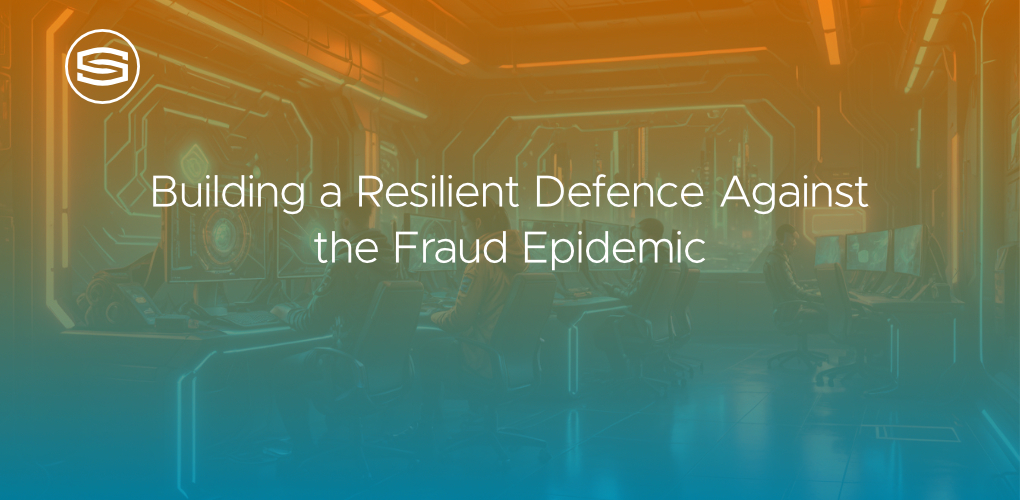
Insights & Opinions
Building a Resilient Defence Against the Fraud Epidemic
Mon, 16 Dec 2024


I recently attended a fraud event organised by the European Banking Conference. Looking back at the insights, it is clear to me that as a trend watcher in the banking industry, I have neglected fraud a bit.
Fraud is no longer an isolated issue—it’s a growing crisis affecting businesses, consumers, and the integrity of our financial systems. Criminals have become more sophisticated, exploiting technology and human vulnerabilities to steal billions every year. None of that is new, but as innovation reshapes the banking and payments industry, fraud prevention must evolve just as rapidly. That’s why this year, we’re dedicating a special focus to fraud at The Banking Scene Conference 2025 Brussels on May 22, 2025.
Fraud Is Evolving and Spreading
Today’s fraudsters are far from the lone cybercriminals of the past. They’re organised, resourceful, and relentless, constantly adapting to new defences. Fraud tactics have expanded from phishing emails and stolen credit cards to complex schemes like fake investment opportunities, social engineering, and business email compromise (BEC).
I’ll never forget that “single males over 40 are particularly vulnerable for becoming a money mule. Apparently, they are lonely, with a bottle of beer, surfing online, and fraudsters easily target them."
Criminals manipulate victims into sharing sensitive details, such as one-time passwords, or even approving large transactions themselves. Fake ads, deepfake technology, and spoofed phone calls make these schemes alarmingly convincing.
“Criminals are some of the most agile adversaries out there,” one expert noted. “They exploit every vulnerability, constantly staying one step ahead of traditional defences.”
The Wide Reach of Fraud
Fraud is no longer just a banking issue—it’s everywhere. Social media platforms, telecom networks, and even e-commerce sites play a role, often as unknowing enablers. Fake ads on social platforms, fraudulent SMS messages, and spoofed phone calls are just some of the ways fraudsters reach their victims.
“Fraud is a chain,” emphasised one panellist. “It touches multiple sectors, and everyone—banks, telecom companies, social platforms—has a role to play in stopping it.”
The interconnected nature of fraud means no single organisation can tackle it alone. Stopping fraud requires a united front involving financial institutions, technology providers, regulators, and law enforcement.
The High Cost of Inaction
Fraud costs businesses and individuals billions yearly, but the financial toll is only part of the story. Each incident erodes consumer trust and tarnishes reputations, making recovery even harder.
“We’ve seen cases where victims lose their entire life savings,” a speaker shared. “And then they’re victimised again by fake recovery agents claiming they can help them get their money back.”
The stakes couldn’t be higher. Failing to act now means allowing these losses—and their ripple effects—to continue growing. By exploring the intersection of innovation and fraud prevention at our conference, we’ll uncover how proactive measures can minimise these devastating consequences, and this is both to prevent clients from committing fraud or falling victim to it!
Technology: A Tool for Both Sides
Technology is at the heart of both the problem and the solution. Fraudsters use artificial intelligence and automation to scale their attacks, while institutions rely on advanced tools to detect and prevent them.
AI-powered fraud detection systems analyse transaction patterns and identify anomalies, while behavioural biometrics can track unusual interactions to flag potential threats. But staying ahead is a constant challenge.
“Fraud is the adversary that never sleeps,” said a cybersecurity expert. “They’re using the same tools we are—and sometimes better ones.”
A speaker referenced the forthcoming European Digital Identity Wallet, which aims to provide a unified framework for secure identity verification across the EU. However, concerns were raised about how fraudsters might exploit its implementation, emphasising the need for proactive measures to protect users from potential vulnerabilities. Indeed, even digital identity is a tool for both sides.
Our conference will highlight how cutting-edge innovations in AI, machine learning, and maybe even blockchain can strengthen fraud defences while fostering trust and innovation in payments.
Collaboration Is Essential
The fight against fraud cannot succeed in silos, or within organisations. The banking industry at large, and if possible in combination with the telecom companies, social platforms, and regulators, must come together to share data, strategies, and resources. Cross-sector collaboration is already proving effective in some regions.
For example, Finland’s anti-spoofing initiative brought together telecom operators, banks, and law enforcement to block fake calls and phishing messages, drastically reducing fraud incidents. Similarly, partnerships between social media platforms and financial institutions are helping to identify and remove fraudulent ads and accounts.
“Collaboration isn’t optional anymore,” stressed a speaker. “Fraud evolves too quickly for anyone to fight it alone.”
By adding fraud prevention to our conference lineup, we aim to provide an additional platform for these critical conversations, inspiring partnerships that can turn the tide in this battle.
Stronger Rules and Incentives Are Needed
Regulators have a critical role in strengthening fraud defences. Frameworks like PSD3 and GDPR provide guidance, but they must adapt to the growing complexity of fraud. Adjustments to data-sharing rules could enable faster and more effective responses while still protecting privacy.
“Regulators must ensure the rules evolve with the threat,” noted a legal expert. “Stagnation is as dangerous as inaction.”
Educating Consumers: The First Line of Defense
Public awareness is crucial. Campaigns like “Stop, Think, Check” in Ireland empower consumers to recognise scams and protect themselves. Special initiatives targeting vulnerable groups, such as older adults and small business owners, focus on teaching simple but effective ways to avoid fraud.
However, experts caution that education alone isn’t enough. Fraudsters are skilled at manipulating victims, convincing them to bypass security measures or authorise suspicious transactions.
“Consumers are being coached into becoming part of the fraud process,” one expert said. “We need systems that protect people—even from their own mistakes.”
A Call to Action
Fraud is a growing threat that won’t disappear without a collective effort. The financial industry, tech platforms, telecom operators, and regulators must come together to build a strong, resilient defence. Whether through better technology, cross-sector collaboration, or smarter regulations, the solutions are within reach—but only if we act now.
“The future of payments depends on how we handle this crisis,” a speaker emphasised. “If we don’t take action, we’ll be left treating the symptoms instead of curing the problem.”
Fraud prevention is no longer a back-office issue—it’s central to the future of banking and payments. By dedicating a stage to this urgent challenge, our conference aims to catalyse the ideas and partnerships that will protect consumers, restore trust, and ensure innovation thrives.
Join us on May 22 as we tackle the fraud epidemic head-on and build the solutions that will define the future.



